
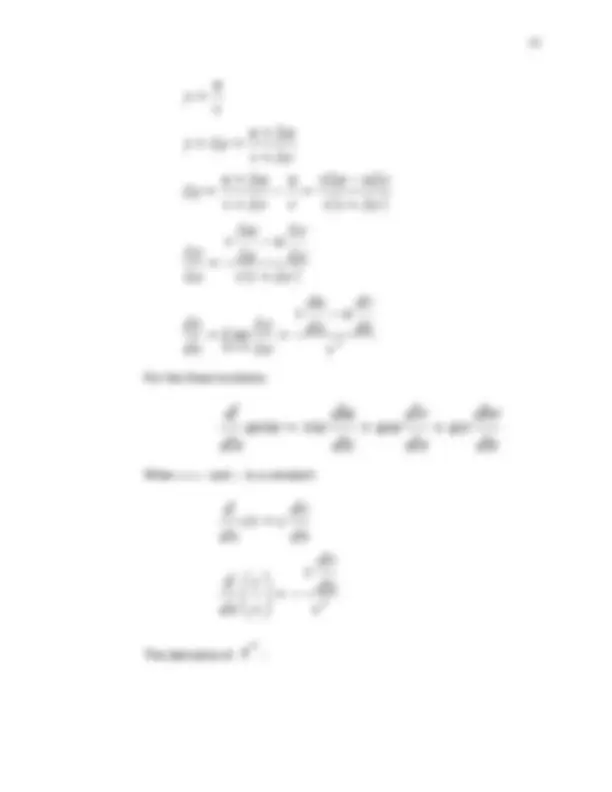
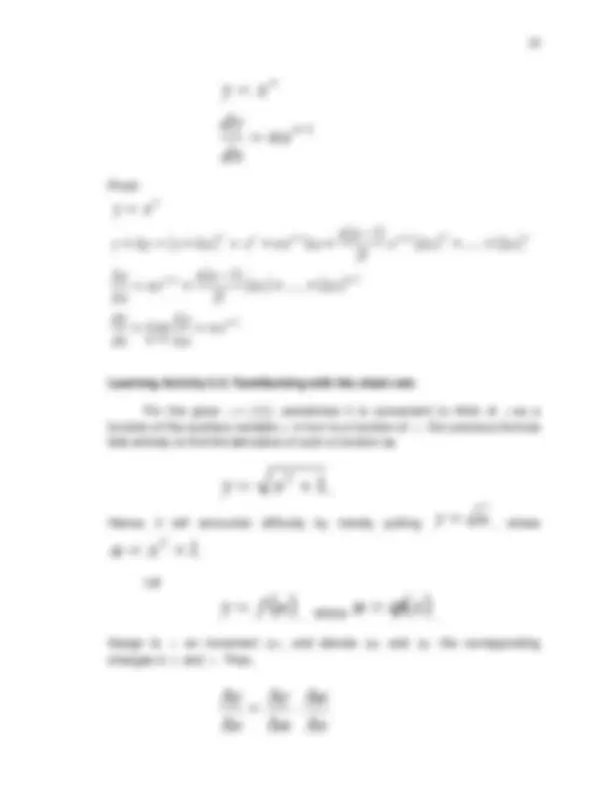
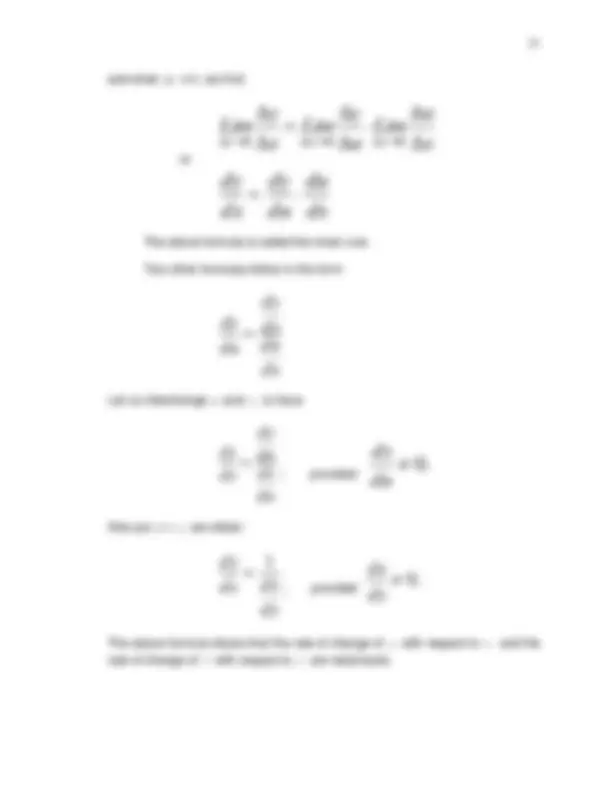
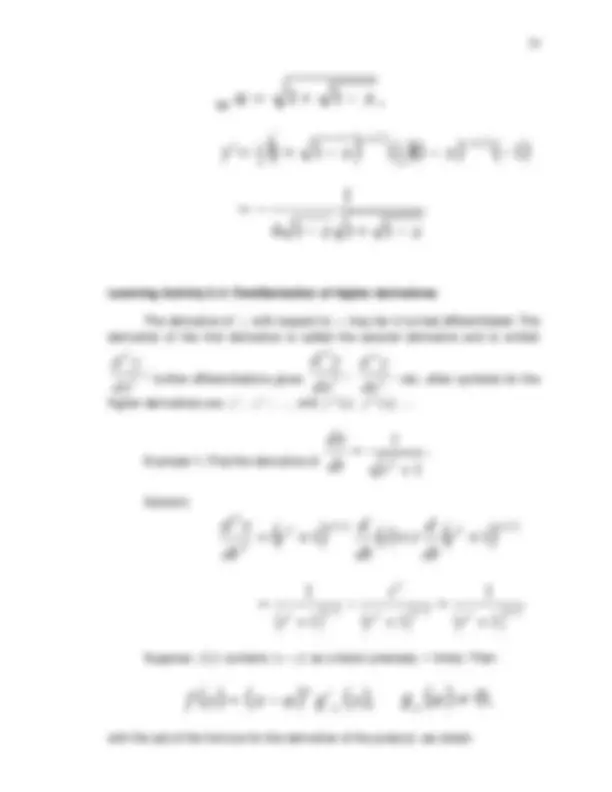
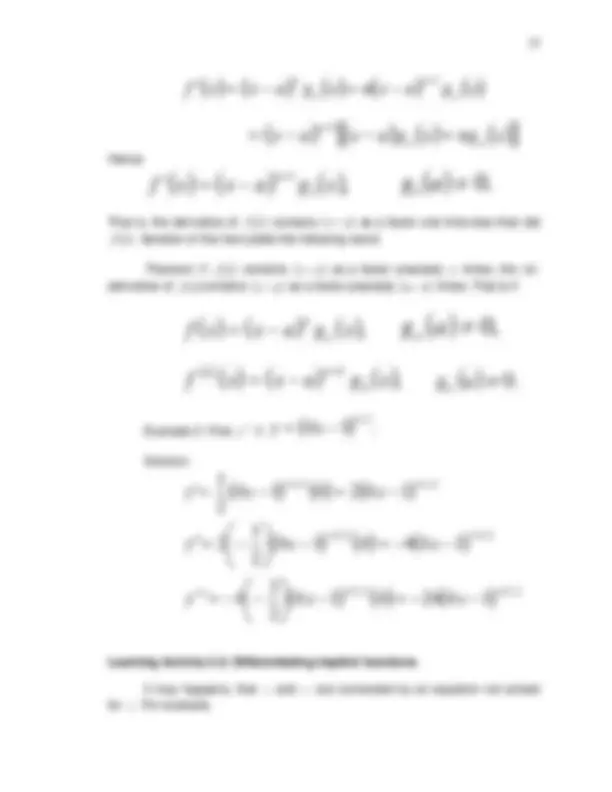
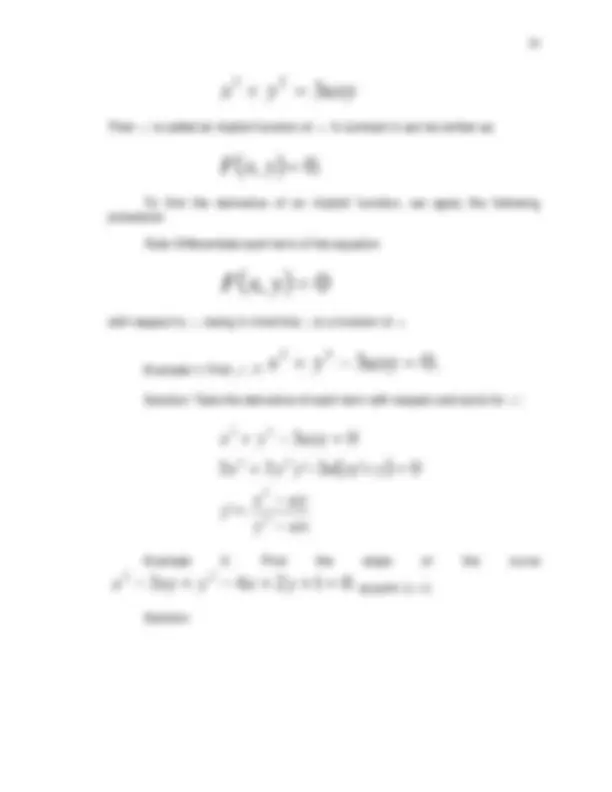


Study with the several resources on Docsity

Earn points by helping other students or get them with a premium plan


Prepare for your exams
Study with the several resources on Docsity

Earn points to download
Earn points by helping other students or get them with a premium plan
Community
Ask the community for help and clear up your study doubts
Discover the best universities in your country according to Docsity users
Free resources
Download our free guides on studying techniques, anxiety management strategies, and thesis advice from Docsity tutors
The objectives, content, and proofs for Unit 3 of algebraic curves in calculus. The unit covers the derivatives of constants, sums, products, quotients, and implicit functions. examples and references.
Typology: Quizzes
1 / 12

This page cannot be seen from the preview
Don't miss anything!







Unit 3 – ALGEBRAIC CURVES
General Objective:
At the end of the unit, the student should be able to differentiate algebraic equations.
Specific Objectives:
At the end of the unit, the student is expected to:
Content:
The functions that are considered in this unit are said to be continuous, one-valued and are differentiable.
Learning Activity 3.1: Derivative of a constant, sum, product and a quotient
The derivative of a constant is zero in the sense that the slope is zero and hence, y 0.
That is,
The derivative of a sum, a product, and a quotient are illustrated as follows
The derivative of the sum is equal to the sum of their derivative provided that they are of the same functions. Hence, we get
dx
dv
dx
du u v dx
d
Proof:
x
0
The derivative of the product:
dx
du v dx
dv uv u dx
d
Proof:
0
The derivative of a quotient:
2
Proof:
nx dx
dy
y x
Proof: n y x
1 0
1 1
1 2 2
..... 2!
1
..... 2!
1
n x
n n
n n n n n
nx x
y Lim dx
dy
x x
nn nx x
y
x x x
nn y y x x x nx x
Learning Activity 3.2: Familiarizing with the chain rule
For the given y f x , sometimes it is convenient to think of y as a
function of the auxiliary variable u in turn is a function of x. Our previous formula fails entirely to find the derivative of such a function as
y x
Hence, it will encounter difficulty by merely putting y^ u , where
1
u x .
Let
y f u , where u x.
Assign to x an increment x , and denote u and y the corresponding
changes in u and y. Then,
x
u
u
y
x
y
and when 0 , we find
x
u Lim u
y Lim x
y Lim x u x
0 0 0 or
dx
du
du
dy
dx
dy
The above formula is called the chain rule.
Two other formulas follow in the form:
dx
du
dx
dy
du
dy
Let us interchange u and x , to have
du
dx
du
dy
dx
dy ; provided
0. du
dx
Also put u y , we obtain
dy
dx dx
dy 1 ; provided 0. dy
dx
The above formula shows that the rate of change of y with respect to x and the
rate of change of x with respect to y are reciprocals.
2 2 2 2 2 2
2
2
1
6
1
32
1
3 1 '
1
3
t
t
t
t
t
t dt
d
x
t
x
(c) Find the derivative of 4 1
1
2
x
x y.
2
2
2
2
2
2
2
2 2
2
4 1
22 2
4 1
4 2 4
4 1
4 1 2 1 4 '
4 1
4 1 1 1 4 1 '
4 1
1
x
x x
x
x x
x
x x x y
x
x dx
d x x dx
d x
y
x
x y
(d) Find the derivative of t
x t
1 .
2
3 2
3 2
1
2
3 2
1
2
1 2
1
2
1
2
1
2
1 '
1
t
t
t t
x t t
x t t
t
x t
e) Find the derivative of y^ ^1 ^1 x.
Learning Activity 3.4: Familiarization of higher derivatives
The derivative of y with respect to x may be in turned differentiated. The
derivative of the first derivative is called the second derivative and is written
2
3
4
etc. other symbols for the
higher derivatives are y '', y ''',….., and f ' ' x , f ' '' x , ....
Example 1: Find the derivative of
2
Solution:
2 1 /^221 /^2 2
2
2 3 /^223 /^2
2
1 1 /^2
Suppose f x contains x a as a factor precisely n times. Then
with the aid of the formula for the derivative of the product, we obtain
x y 3 axy
Then y is called an implicit function of x .In contrast in can be written as
F x , y 0.
To find the derivative of an implicit function, we apply the following procedure:
Rule: Differentiate each term of the equation
F x , y 0
with respect to x , being in mind that y is a function of x.
Example 1: Find y ',if^30.
x y axy
Solution: Take the derivative of each term with respect and solve for y ':
y ax
x ay y
x y y a xy y
x y axy
2
2
2 2
3 3
'
3 3 ' 3 ' 0
3 0
Example 2: Find the slope of the curve
3 4 2 1 0
2 2 x xy y x y at point 1 , 1 .
Solution:
3 2 2
2 3 4 '
2 3 2 ' 3 2 4
2 3 ' 2 ' 4 2 ' 0 0
3 4 2 1 0
2 2
x y
x y y
y x y y x
x xy y yy y
x xy y x y
When x 1 and y 1 , then
(^3)
1
31 2 1 2
21 3 1 4
3 2 2
2 3 4 '
x y
x y y m
Also, we may solve for y directly from the given equation using the
quadratic formula:
3 2 3 2 4 4 1
(^22) 2
1 2
1
2 2
2 2
Since y above is a two-valued function of x , we need to select the correct
branch of that function. We are seeking the slope at 1 , 1 , y must take on the
value minus one when x 1 .Therefore, we must choose the branch
y 3 x 2 5 x 4 x
x x
x y m 2 5 4
5 2
2
3 ' 2
Hence, at 1 , 1 , we get
3
1
6
9 7
2 9
7
2
3
m